Review: 2013 Ford Mustang GT — Track Tested

Two years ago, we met the five-liter Mustang at Summit Point’s Shenandoah course and pronounced it to be an outstanding track car with perhaps too emphatic a nod of the head to the bare-bones aesthetic. This year, we have a 2013-model five-liter with the same performance equipment but another eight thousand dollars’ worth of options and product improvements. Is this loaded Mustang GT worth considering as a trackday toy, or should you go straight to the Boss 302?
The drive from sunny Powell, Ohio back to Shenandoah means putting four hundred and ten freeway miles, each way, on our “Gotta Have It Green” tester. This car has nearly every major option but the glass roof, and although said roof is just a delight for late-night cruises with your favorite girl beneath your favorite stars, it really is too much of a giant weight at the top of the car to be seriously considered by part-time track rats.
Depending on your region and incentives, this car could run as much as $42,747. That’s a full ten grand above our 2011-model tester, and it brings the Mustang into some pretty exotic neighborhoods, chock-full of loaded Infiniti G Coupes and BMW 3ers. On the road, however, all the extra equipment is welcome. Even the “track-focused” Recaros are a surprisingly good choice for six or seven hours’ worth of continuous droning at 75-85mph, with the on-board computer reporting a solid 22.8mpg.
While the 2013 update adds some pretty wicked exterior cosmetics, including a black-out retro tail panel and some functional-ish-looking scoops and vents, the best news is found between the instrument dials. The Mustang isn’t a full MyFordTouch car; instead, like the Super Duty trucks it has a good, solid SYNC system that reliably recognizes my squeaky voice as I demand everything from the location of the nearest Pizza Hut to an eleventh mind-numbing repetition of Corrine Bailey Rae’s “Call Me When You Get This”. The center LCD display is informative, readable, and even includes a nice g-meter, which is shown above, and maxed-out, by your humble author.
At the end of our freeway grind, I’m convinced that the Mustang really is the best, most thoroughly-realized product Ford makes. It has no actual competition: the Camaro and Chally are pigs in contrast, even if they are handsome pigs like Wilbur. Such a situation is a recipe for stagnant development, but it’s hard to argue that the current Mustang has not been continually improved everywhere it’s been necessary. Every positive tradition associated with the Mustang name is faithfully replicated in this vehicle…
…except, perhaps, value. It depends on how you look at it. The car simply doesn’t offer $42,000 worth of superslab-cruising or baby-seat-carrying value. An Audi A5 is a far more pleasant vehicle in which to travel long or short distances. It’s a tough choice: do you buy the $32,000 GT and have the fastest car that amount of money can buy, or do you buy the $42,000 GT and, well, okay, you’ll still have the fastest car that amount of money can buy, but wouldn’t that sexy little grad student who lives next door be more impressed by some four-cylinder BMW?
Once we arrive at Shenandoah, all that social-impact crap goes out the window. Time to take a lap, so feel free to open up your track map and follow along.
Join me as we pass the start/finish line and prepare for Turn One. Was our entrance to the Turn 22/Turn 1 combo, which should be taken as a single corner, adequate? Who cares? The five-liter rotates the car at will in the most wonderfully safe and controllable manner possible. The throttle programming on this engine is sublime, allowing you to add 100-rpm increments with precision while cranked over at one-gee-plus cornering. We’re full-throttle from the exit of 1 to the entry of 5, and here the GT shows its inferiority to the Boss 302, both in the annoying P-Zero-Nero all-season tires and the roly-poly nature of the non-adjustable suspension. The transition requires commitment, even if it doesn’t require muscle thanks to power steering that never runs out of juice, even after multiple back-and-forth swings. For most of us who were raised on small, sporting cars, the mental adjustment required to ignore the Mustang’s long-hood view on the track takes a few laps. The steering’s trustworthy nature helps with that; after a while, we no longer worry that the nose will “get away”.
Five requires a pretty vicious stab on the brakes. The GT doesn’t like curbs the way the Boss likes them, mostly because the adjustable suspension is Boss-exclusive, but it’s okay to use the curb as a bit of a bouncer down the “Stone House Straight”. The five-liter’s heroic nature asserts itself here, and it’s a perfect partner for the 3.73 rear end. Never does the GT feel out of breath or starved for torque. If you’re used to, say, the VQ/FM Nissans, this will blow the cobwebs out of your mind and recalibrate your notion of what “fast” means.
Perhaps our mind wanders during this short Stone House Straight. Maybe we think for a moment about how the 5.0 “Coyote” is just soooo much more satisfying than the GM LS engines. Why? It’s simple. The damn thing revs without complaint. It loves to rev. It’s like two Honda fours together. The Chevy small-block has never been an enthusiastic revver, even in LS6 or LS7 trim. Yes, it will rev, but the Coyote leaps for the redline where the GM loafs.
What a shame, then, that the GT doesn’t come with a nice Tremec transmission through which to put all this power. I don’t want to belabor the point about the Chinese-assembled six-speed, but it needs to be said. The Mustang deserves better. Ford’s in the habit of premium-pricing their vehicles, so why not install a premium transmission and charge the difference?
Alright. This car’s so rapid we don’t have time to navel-gaze any more. Time for the big brake stomp into Six and Seven, which we take as a single “V” shaped line, adjusting with throttle as necessary. This Mustang, just like the 2011 model, just like the Boss, requires brake management. If you don’t know what that is, I can teach you at a 2012 TrackDAZE event (SPONSORED CONVERSATIONAL MESSAGE!) or you can contact an instructor such as Peter Krause. (UNSPONSORED CONVERSATIONAL MESSAGE!)
The 8-9-10 complex we take in a broad curve before throttling down to 11. This is where the infamous live axle should sabotage the car. It doesn’t. It simply requires respect when you hit the curbs. If your front wheels aren’t straight when you bump a curb at speed, the car won’t be straight when it lands. Fair enough? Last week, we talked about how the Hyundai Genesis doesn’t suffer from this problem. This does not mean a Mustang GT will ever suffer from the problem of being passed by a Hyundai Genesis on a racetrack.
The accursed P-Zeros require patience through 11, and I mean patience. The five-liter wants to run. Make it wait. Yes, the 5.0 can adjust the corner exit with throttle, but that means you will have hot rear tires for the rest of the lap. Best to wait and then let the engine pull you up the Bridge Straight. We’ll be well over 110 miles per hour when all four wheels leave the ground over the “bump jump”. How well does a nearly-two-ton car jump and land? Just fine, thanks. The unibody just feels solid. Then it’s time to hit the ABS and dive into the replica Karussell. Now we’re glad that we are in a Mustang, because unlike a lot of more delicate cars, we can enter at 55mph or so without ripping off the nose. Aren’t you glad you didn’t buy a Boss Laguna Seca? That splitter would be in the grass, son.
Here, too, the fundamental soundness of the Mustang structure shows itself. It rattles less than a new 997 or Corvette through the concrete bowl, and it fairly leaps out with a big sideways step from the Torsen-diffed rear end. Make sure you buy the limited-slip rear diff. Without it, you can’t make the back tires do what’s required to manage understeer.
Turns 14, 15, and 16 are simply run straight by the curb-chomping Mustang. Again, this car is big and solid like a Panther and it accelerates like a NASA American Iron racer. Better stop the car a bit, managing the brakes, for Turn 17.
This, dear reader, is where you will miss your Civic. More pertinently, you will miss the Fox Mustang, and maybe even the SN95 Mustang. Why, oh why, exactly, does this vehicle have to be soooo large? The P Zeros are partly to blame for the eternal wait in this very slow right-hander, but most of it is really just due to the fact that the Mustang is 105% of the proper size. Blame the Lincoln LS and its donated platform, but one ride in a Camaro will show you that there are worse platforms from which to build a ponycar.
What’s left on the track? A dyno test in the form of a long curve and back straight. With proper tires, the GT wouldn’t even need to brake for “Big Bend”. With the Pirellis, you need to be a little careful. The steering is your ally here, faithfully reporting the amount of grip in a way that Corvettes can’t always accomplish. Then we hit the brakes hard for 20 and then again for 21… bringing us to the start/finish line.
You have questions. I have some answers.
- Should I buy this over the Camaro or Challenger? Yes, if you will ever track it. If not, consider the Challenger, which has increased street presence and more room.
- Should I buy this loaded GT or a Boss? A Boss. If you can afford it. The real transaction price difference between a $42K GT and the $45K Boss with Recaros and Torsens is likely to be on the high side of six thousand dollars. If, on the other hand, you just want a nice street car, the Boss is a waste. Get a GT, and buy the glass roof with it, too.
- Is there a comparably-priced vehicle which can keep up with this on the track? Almost certainly not.
- How much faster is this than a G37, 328i, A5, or plain CTS Coupe? Much, much faster.
- What’s the best thing about this Mustang? The engine.
- And the worst? The transmission, for track rats. For everyone else, probably the trunk, which verges on parody.
Time to head back home to Ohio. With a slightly bigger set of brakes and a Tremec transmission, this would be the must-buy car of 2013, particularly for people who are worried about what the next Mustang will look like. Even with those flaws, this is still a gorgeous, big-hearted, hugely quick car which didn’t rattle, squeak, or display any quality problems over the course of nine hundred road miles and about eighty racetrack laps. It’s the best all-around ponycar in history, and the head of its class.
Photography — Julie Hyde and Ed Gately
Ford provided the vehicle and insurance for this test. TrackDAZE provided the space on the track and a rather decent lunch for two days. The author is a TrackDAZE instructor and can be requested by novice and intermediate-level drivers at many 2012-season TrackDAZE events.

More by Jack Baruth
Latest Car Reviews
Read moreLatest Product Reviews
Read moreRecent Comments
- SPPPP I am actually a pretty big Alfa fan ... and that is why I hate this car.
- SCE to AUX They're spending billions on this venture, so I hope so.Investing during a lull in the EV market seems like a smart move - "buy low, sell high" and all that.Key for Honda will be achieving high efficiency in its EVs, something not everybody can do.
- ChristianWimmer It might be overpriced for most, but probably not for the affluent city-dwellers who these are targeted at - we have tons of them in Munich where I live so I “get it”. I just think these look so terribly cheap and weird from a design POV.
- NotMyCircusNotMyMonkeys so many people here fellating musks fat sack, or hodling the baggies for TSLA. which are you?
- Kwik_Shift_Pro4X Canadians are able to win?



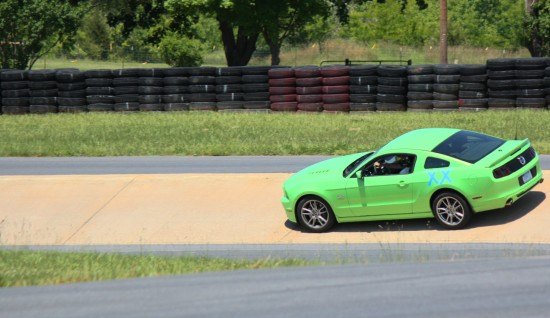



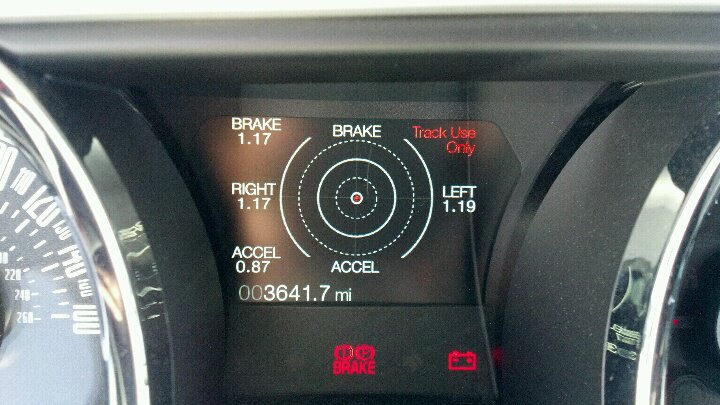





















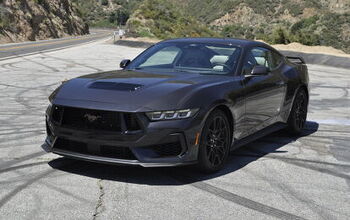
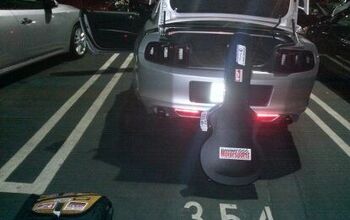
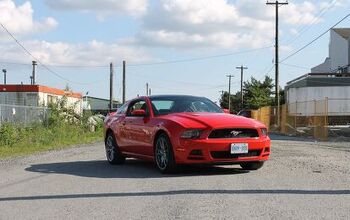

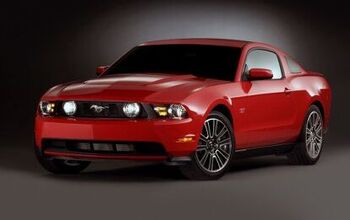










Comments
Join the conversation
I don't understand the big debate about the quality of the interior of this car. I just sold my 09' Infiniti G37S Coupe, which is the sport model with manual trans, and ordered a 2013 Mustang GT Premium with most options including the Brembo Brake Package. I realize the interior of the G was overall higher quality material, but I like the Mustang just fine. The Mustang is not just far faster, but it's also much more comfortable. The Mustang gives me more elbow room, more headroom, a much more comfortable seat, a bigger trunk for weekend getaways, way more power and the same highway mpg as the V6 Infinite. And 2 1/2 years later the Mustang costs about $3,200 less for the same equipment as the G. The G was a nice car, but it's negatives drove me to dump it with less than 16,000 miles on it.
Firstly, VERY FEW people are gonna purchase a $42k Mustang GT. Even less are gonna spend that much on one with a track package. Especially now with the Boss 302's not moving. If they want to spend that much money on a Mustang and are gonna track it, they'll buy the Boss. Next, anybody that's even half serious about track-ing their car, is gonna flush out the OE brake fluid with some Motul et al. Most likely even with the 'low-expansion' lines, they'll prolly still install the tried-and-true steel braided variety. They're also gonna purchase track tires, although 19" track rubber is pretty$$$, so they might also buy some good 18" track wheels(Enkie) as well. With these 'minor' improvements/track day 'must haves', there'll be no brake fade or massive grip loss. Lastly, as far as trying to determine which car to get for track use-the GT or the Boss, consider this: You can get a GT with the track package, AND Recaros for under $35k MSRP! That means in reality, a couple G's less. If you get the best deal on the planet for a Boss, you're still gonna pay MSRP OTD-$45k(nobody buys the non-torsen-equipped cars). Thats a roughly TEN-THOUSAND-DOLLAR DIFFERENCE!. The ONLY track-'worthy'(and I use the term 'Worthy' VERY loosely) item(s) you get on the Boss that you don't get on the GT w/track pack are the adjustable shocks. Actually looking at the damn things however, reveals they're single-adjustable(you adjust compression AND rebound with a shared adjuster, i.e. you get MASSIVE inter-circuit bleed), thus aren't worthy of ANY decent track-day car. If you take your track driving even semi-seriously, the (basically) $600 off-the-shelf Kayaba's that come on the Boss would get pitched in favor of AT LEAST some fully-adjustable KW's, so there just went the Boss's advantage. For $35k you can get a GT with the track package and Recaro's(or if you're more serious, forget about the $1600 Recaro's and just buy a Sparco Evo seat and a harness bar, and you save another $1200). For another $2500+/- you can get a set of KWs or any other GREAT entry-level FULLY ADJUSTABLE suspension along with a decent alignment so you don't roll your tires, and you're still a WHOPPING $7500 AHEAD of where you'd be had you bought the Boss. Did I mention that you'd also have a car that will RUN CIRCLES around the Boss, a Shelby and a ZL1(just to name a few)? Suspension is the SINGLE BIGGEST area of improvement on a car, and simply installing a set of KWs etc. will give you EASILY 4-seconds a lap improvement over the stock crap. Add tires and you got another 2 seconds. Yes you do not have the neat reflective Boss stickers going down the sides of your car, but while I can't speak for everyone, personally I think stickers(EXCEPT on the Porsche GT-3 RS, the only car that gets a pass on this one) belong soley on '86 IROC's driven by Vinnie Barbarino's in Jersey, wearing their blue-blockers, Members Only jackets, gold chains around their necks, and glue-on chest hair they picked up at the local Crazy Eddie's Disco Emporium. On any other car, especially cars that are to be taken seriously, stickers devalue them horrendously.